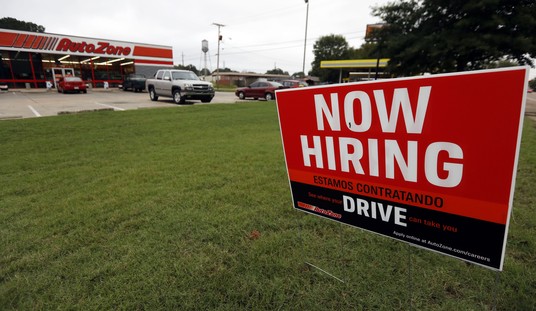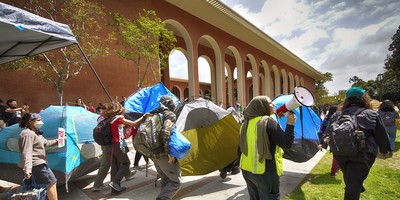For this debacle, it gives us:
A picture caption with an audio slide show on July 27 about an Israeli attack on a building in Tyre, Lebanon, imprecisely described the situation in the picture. The man pictured, who had been seen in previous images appearing to assist with the rescue effort, was injured during that rescue effort, not during the initial attack, and was not killed.
The correct description was this one, which appeared with that picture in the printed edition of The Times: After an Israeli airstrike destroyed a building in Tyre, Lebanon, yesterday, one man helped another who had fallen and was hurt. (Go to Interactive Feature)
On the same day it covers Adnan's Fauxtography:
Mr. Hajj, a Lebanese photographer based in the Middle East, may not be familiar to many newspaper readers. But thanks to the swift justice of the Internet, he has been charged, tried and convicted of improperly altering photographs he took for Reuters. The pictures ran on the Reuters news service on Saturday, and were discovered almost instantly by bloggers to have been manipulated. Reuters then announced on Sunday that it had fired the freelancer. Executives said yesterday that they were still investigating why they had not discovered the manipulation before the pictures were disseminated to newspapers.
The matter has created an uproar on the Internet, where many bloggers see an anti-Israel bias in Mr. Hajj’s manipulations, which made the damage from Israeli strikes into Beirut appear worse than the original pictures had. One intensified and replicated plumes of smoke from smoldering debris. In another, he changed an image of an Israeli plane to make it look as if it had dropped three flares instead of one.
Well, it made it look as if there were three flares (defensive measure), and then called them missiles in his cutline. Is it just me or is there a little more credit-where-credit-is-duing in this story than would normally be expected of the Times. They even say in the headline, "Bloggers Drove Inquiry," and admit that Hajj's name might not be familiar to newspaper readers (read: you know, because we don't cover this kind of stuff).
Recommended
Of course, they also kind of make bloggers sound a bit like a Wild West mob with the "swift justice," and "charged, tried, convicted." Eh, I'll take it.
Check out the poster-boy for out-of-touch MSM guy:
Paul Holmes, a senior Reuters editor who is also responsible for the agency’s standards and ethics, said the agency dealt with the matter within 18 hours.
“By the time I checked my e-mail at 10 Sunday morning, we had killed the doctored photo and suspended the photographer,” he said. The agency subsequently stopped using the photographer and has removed the 920 digital photographs of his in its archives. It is reviewing them to see if any others have been improperly altered.
Heh, you didn't check your e-mail until 10 Sunday morning? Amateur.
A history of doctoring:
Other news outlets have also tightened their procedures after learning the hard way about the heightened risk of photo manipulation. Last month, The Charlotte Observer fired a photographer who enhanced the color of the sky in a local photo to make it more dramatic. The Los Angeles Times fired a photographer in 2003 after he altered an Iraq photo that it ran on the front page.
Santiago Lyon, director of photography for The Associated Press, said his agency fired a photographer “in the last year” for changing a picture; he gave no further details.

























Join the conversation as a VIP Member